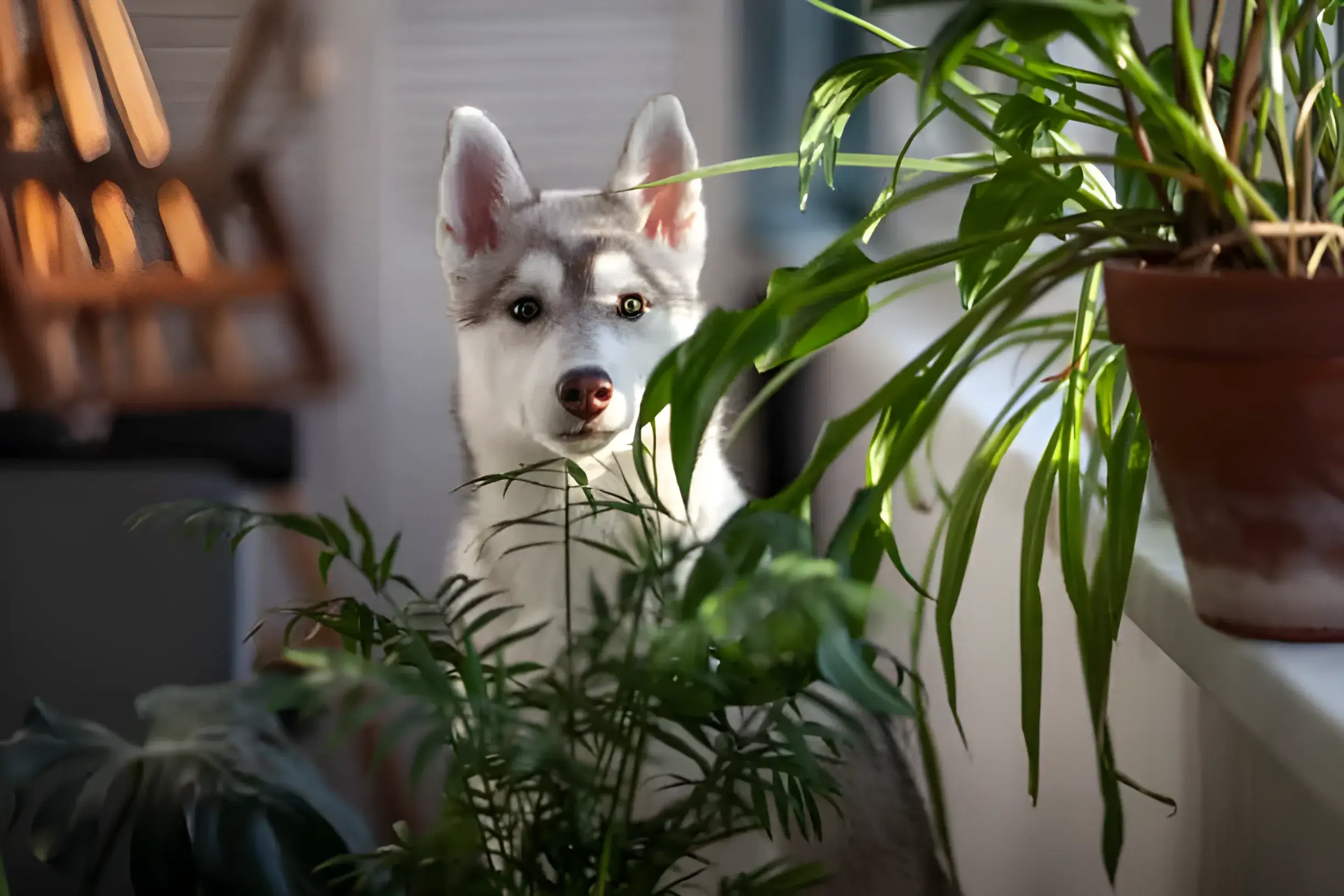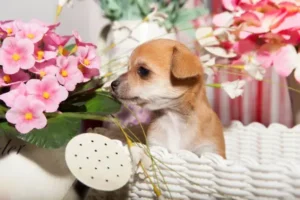The good news is that the true Money Tree plant (Pachira aquatica) is not toxic to dogs. This popular houseplant doesn’t contain any compounds harmful to our canine friends. However, it’s important to understand why this question is so prevalent.
Why the Confusion?
Misleading Names: Several other houseplants also share the name “money tree.” Some of these might be mildly irritating if ingested by your dog. It’s crucial to know exactly which plant you have.
Similar-Looking Toxic Plants: Some toxic plants can resemble a Money Tree such as Pachira macrocarpa and Crassula ovata. If you’re unsure, it’s always best to consult a vet.
General Pet Safety Concerns: Even pet-safe plants can cause mild stomach upset if your dog munches on them excessively.
My Dog Ate Some Money Tree – What Now?
While Money Trees are a pet-friendly choice, it’s always a good idea to check in with your furry friend after they’ve explored any plant:
Watch for Mild Reactions: Occasionally, a nibbled leaf or a bit of sap can cause minor issues like an upset tummy, noticeable drool, or your dog trying to clear their mouth.
Changes in Behavior: If your dog seems overly sleepy or just “not themselves,” it’s worth checking in with your vet to be on the safe side.
In most cases, a little encounter with a Money Tree will cause no trouble at all. But if you ever have a question, your vet or a pet poison control hotline will gladly offer advice!
Safe and Stylish: Pet-Friendly Houseplants
If you have a curious nibbler at home, here are some beautiful, non-toxic alternatives to the Money Tree:
- Spider Plant (Chlorophytum comosum): Easy to care for, with playful trailing foliage
- Bird’s Nest Fern (Asplenium nidus): Adds lush texture with ruffled leaves
- Peperomia varieties: Come in a variety of shapes, colors, and textures (e.g., Peperomia obtusifolia)
- African Violets (Saintpaulia ionantha): Vibrant blooms that are safe for pets
Tips for Keeping Plants and Pets Happy
Location is Key: Put your Money Tree on a secure shelf, a plant stand, or in a hanging basket – places where your dog won’t be tempted to investigate.
A Little Training Goes a Long Way: Reinforce the “leave it” command to help your dog understand that plants are off-limits.
Supervision, Especially at First: Keep a watchful eye on your pet when they’re around a new plant. This lets you redirect any unwanted curiosity.
Unveiling the Mystery: Images and Identification Guide
Don’t worry, identifying your Money Tree accurately is simple! While pet-safe, some houseplants with similar names might cause mild tummy trouble. Let’s ensure you have the right one:
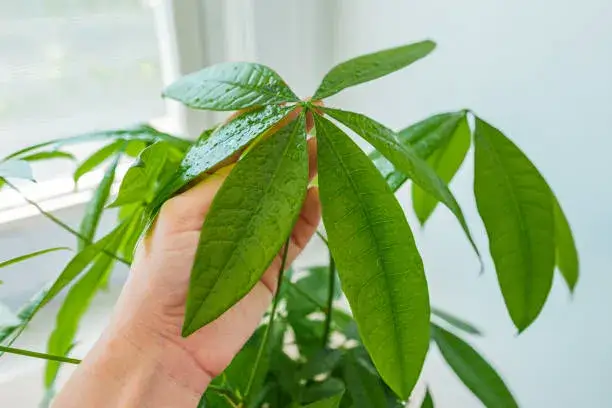
The True Money Tree (Pachira aquatica): Notice its iconic braided trunk and glossy leaves that resemble a hand with five to seven fingers (leaflets).
Image Credit: Michele Pevide/istockphoto
Look-Alikes to be Aware Of:
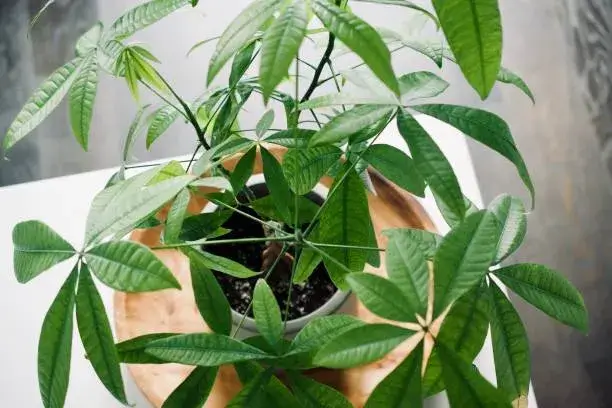
Guiana Chestnut (Pachira macrocarpa): Also has a braided trunk, but its single leaves are larger, oval-shaped, and have a leathery texture.
Image Credit: Michael Gollop/istockphoto
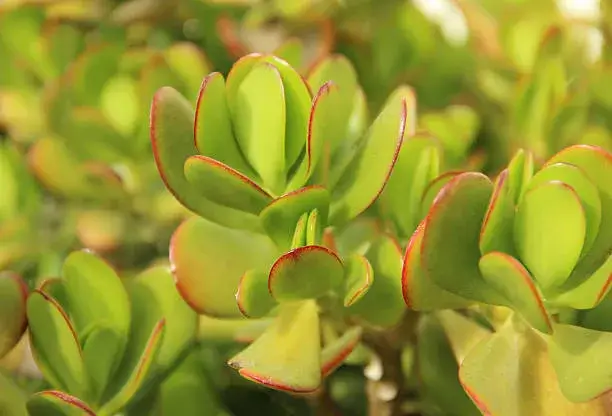
Jade Plant (Crassula ovata): A popular succulent with fleshy, jade-colored oval leaves. While generally safe, can upset a pet’s stomach if eaten in large amounts.
Image Credit: springtime78/istockphoto
The “Beyond Safety” Section: Benefits and Care Tips
Benefits of Bringing Nature Indoors – Safely!
Money Trees brighten your home and offer more than their pet-friendly nature. Let’s explore those perks:
Improved Air Quality: Money Trees, like other houseplants, gently filter out everyday household pollutants – a bonus for both you and your pet.
Enhanced Ambiance: The Money Tree’s vibrant green leaves bring life and a touch of natural calm to your space.
Keeping Your Money Tree Thriving: Simple Care Tips
The Right Light: Set your Money Tree where it receives plenty of bright sunshine, but avoid placing it in the path of intense midday beams.
Careful Watering: Allow the top bit of soil to become dry before giving your plant a good watering session. Make sure excess water drains away and the pot is never soggy.
A Little Boost During Growing Season: In spring and summer, treat your Money Tree to a diluted balanced fertilizer about once per month.
Conclusion
Rest assured, your furry friend can safely share a space with the popular Money Tree houseplant. By understanding the sources of confusion, providing safe alternatives, and practicing good plant habits, you’ll create a beautiful and pet-friendly home.
The photo featured below the post headline is Credit: Sergeeva/istockphoto
I hope you find this post helpful and informative. If Yes’ feel free to share it with your friends!
Frequently Asked Question
Are all plants called “money trees” safe for dogs?
No! It’s crucial to identify your plant correctly. Other plants sharing the “money tree” name may be mildly toxic.
Are there any symptoms I should look out for?
While Money Trees are safe, some dogs might experience mild digestive upset or drooling. Reach out to your veterinarian if the symptoms seem severe or don’t clear up on their own.
My dog ate a Money Tree leaf. Will he be okay?
In most cases, yes! Money Trees are non-toxic to dogs, so your furry friend should be fine. Monitor them for mild irritation (drooling, pawing at the mouth) and unusual behavior, and contact a vet with any concerns.
Can Money Tree sap irritate my dog’s skin?
Although the sap is harmless, some sensitive pups might experience a bit of irritation. If you notice redness or repeated scratching, gently wash the area. Contact your vet if the irritation persists.
Are any fertilizers dangerous to use with a Money Tree if I have pets?
Yes! Avoid slow-release fertilizers with granules, as these might attract dogs and can be harmful if ingested. Stick to liquid fertilizers, diluted per instructions, and applied when your pet is in another area.
My cat seems interested in my Money Tree. Is it safe for cats too?
Yes, the Money Tree is also non-toxic to cats. However, cats might be prone to chewing on leaves more than dogs. Offer cat-safe alternatives like cat grass to redirect their chewing habits.
Are Money Trees easy to care for if I have a playful pet?
Yes! Money Trees are relatively low-maintenance. Place them in a secure spot out of your pet’s reach, and their sturdy trunks and foliage can handle some gentle bumps if accidents happen.
How can I tell if my Money Tree is getting enough light?
Watch for signs like leaves turning pale or yellow, slow growth, or a leggy appearance. A Money Tree needs bright, indirect sunlight to flourish.
I’m worried my dog will knock over my Money Tree. Any tips?
Choose a planter with a sturdy, wide base to keep it stable. You can even add some weight by putting decorative pebbles in a cachepot that holds the plant.
Is there a safe way to discourage my dog from going near my Money Tree?
Consider spraying diluted citrus oil around (not on) the plant. Most dogs dislike citrus scents. Combine positive reinforcement (“leave it” command) with this deterrent.
Can I propagate a Money Tree to create more pet-safe plants?
Absolutely! Money Trees are easily propagated from stem cuttings. This can be a fun project and give you peace of mind by creating multiple safe plants for your home.
Can a Money Tree help reduce stress for both me and my dog?
Studies suggest that interacting with plants can have calming effects on humans and animals. While more research is needed, the presence of a thriving Money Tree may contribute to a more relaxed environment.

